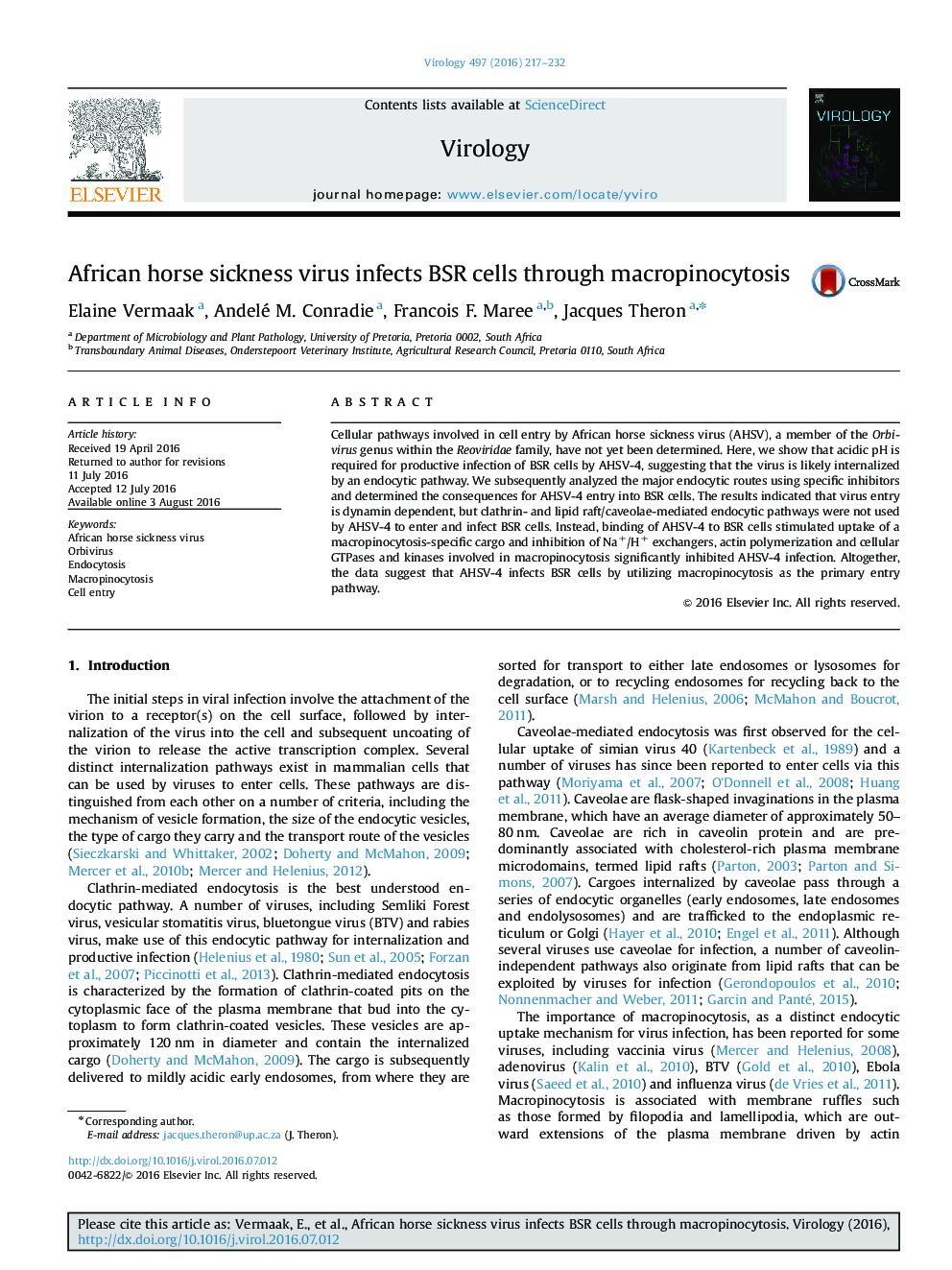| Article ID | Journal | Published Year | Pages | File Type |
|---|---|---|---|---|
| 6138647 | Virology | 2016 | 16 Pages |
â¢AHSV entry requires endocytic vesicle acidification.â¢AHSV enters cells via a caveolin- and clathrin-independent pathway.â¢An entry pathway involving a macropinocytosis-like entry mechanism is proposed.
Cellular pathways involved in cell entry by African horse sickness virus (AHSV), a member of the Orbivirus genus within the Reoviridae family, have not yet been determined. Here, we show that acidic pH is required for productive infection of BSR cells by AHSV-4, suggesting that the virus is likely internalized by an endocytic pathway. We subsequently analyzed the major endocytic routes using specific inhibitors and determined the consequences for AHSV-4 entry into BSR cells. The results indicated that virus entry is dynamin dependent, but clathrin- and lipid raft/caveolae-mediated endocytic pathways were not used by AHSV-4 to enter and infect BSR cells. Instead, binding of AHSV-4 to BSR cells stimulated uptake of a macropinocytosis-specific cargo and inhibition of Na+/H+ exchangers, actin polymerization and cellular GTPases and kinases involved in macropinocytosis significantly inhibited AHSV-4 infection. Altogether, the data suggest that AHSV-4 infects BSR cells by utilizing macropinocytosis as the primary entry pathway.
